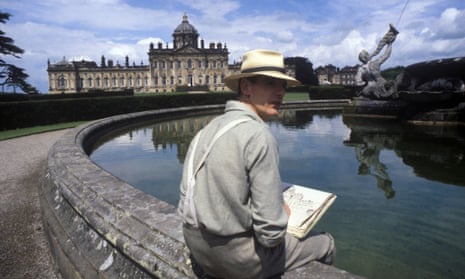I’ve always loved evocative old castles, abbeys and manors in books. Especially when they are real enough to let me climb inside and live the sort of luxurious lifestyle I can’t afford in real life. Some of my favourites reflect the mood of the book and some are almost characters in themselves. Each one makes a lasting impression.
1. Brideshead Castle from Brideshead Revisited by Evelyn Waugh
Brideshead Revisited was a battered favourite among boys I knew when I was in my teens. Although it was never the theological theme of the book that interested them – they, like Charles Ryder, had fallen under the spell of Brideshead Castle and the glamorous Flyte family.
Charles is already entranced with beautiful and charming Sebastian Flyte, when he’s taken to Brideshead to meet Sebastian’s nanny. He first sees the house on a sunny afternoon in June and admits that although “rapt in the vision” he also felt an ominous chill at the words Sebastian used – not, “that is my house”, but “it’s where my family live”.
Although Brideshead has a shining dome, fireplaces of sculptured marble, frescoed ceilings and startlingly renovated chapel there’s an air of sadness amid all the splendour. Of course, we already know from the prologue that the castle will be taken over and damaged by the army – and while writing the book, Waugh himself believed that all ancestral seats like Brideshead were doomed to decay.
2. Hampton from Love in a Cold Climate by Nancy Mitford
Hampton is an English country house built in the style of a Gothic French chateau. It is grand and mad and utterly terrifying. Lady Montdore takes few pains to put her guests at ease and poor Cousin Fanny (no stranger to the eccentricities of country house living, having spent her holidays at Alconleigh with the Radletts) finds “the terror at Hampton was of a different quality, icy and dispassionate, and it reigned downstairs.”
Hampton is impossibly splendid and luxurious. There’s the huge French map table, always covered with the latest papers which are rearranged several times a day by a footman. The names and titles of the guests are “written in a careful copperplate on a card on the door”. There’s the Long Gallery, always full of fashionables “chattering like starlings in a tree”, and of course, the boiseries, Boulle and bronzes that so delight Cedric.
In spite of such splendour, Hampton echoes the cold climate of the title and Polly Hampton confides in Fanny that she “envies the Radlett children with their upbringing in such a quiet, affectionate household.”
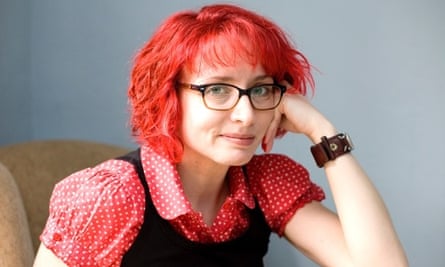
3. Blandings Castle from the Blandings series by PG Wodehouse
Another writer every bit as popular with male readers as female, Wodehouse recorded a privileged and golden world that never really existed. Blandings Castle stands at its heart. It’s described as one of the oldest and largest stately homes in England, with its “smooth green lawns, rolling parkland, majestic trees, well-bred bees and gentlemanly birds”. Not forgetting the infamous moss-carpeted Yew alley and the exceptional rose garden. The sun of course, is always shining.
Blandings is the seat of the ninth Earl of Emsworth – although he has to share it with his sister, his children, an assortment of servants and other bars to his happiness. Upon meeting his son, Freddie, in London, he declares “And why anybody but an imbecile should want to come to London when he could be at Blandings!”
Life at the castle is far from peaceful. His Lordship’s children form disastrous attachments, jewel thieves abound, McAllister and Beach regularly give notice and the Empress goes off her food. Everything always comes right in the end, though, and Lord Emsworth will spend the final page in the library, drinking a restful whisky and soda and reading a Pig book.
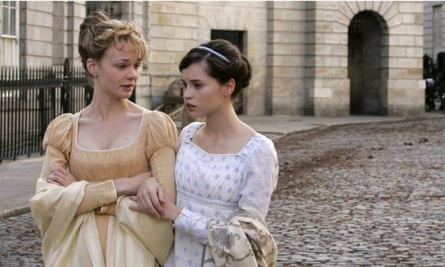
4. Northanger Abbey by Jane Austen
“Northanger Abbey! – These were thrilling words, and wound up Catherine’s feelings to the highest point of ecstasy.” Of all Jane Austen’s famous country houses, Northanger Abbey is irresistible simply because it’s so...disappointing. It is believed by the heroine to be the sort of spooky old ruin that features in Gothic novels – an Otranto or a Udolpho.
During the journey into Gloucestershire, Henry is amused to discover that Catherine imagines his family home will have secret passages, narrow cells and a ruined chapel. Instead, she finds modern lodges, elegant furniture, wide-paned windows and an army of well-trained servants. In her room, a strange bureau contains only a bundle of receipts. A sinister chest contains a counterpane. Finally – after making the mistake of suspecting Henry’s father of murder – Catherine reaches the conclusion that “Charming as were all Mrs Radcliffe’s works, and charming even as were the works of all her imitators, it was not in them perhaps that human nature, at least in the midland counties of England, was to be looked for!”
5. San Salvatore from The Enchanted April by Elizabeth von Arnim
“To Those who Appreciate Wistaria and Sunshine. Small Mediaeval Italian Castle on the shores of the Mediterranean to be Let Furnished, for the month of April.”
An advertisement in The Times draws four very different women to San Salvatore, each of them longing for escape. Mrs Wilkins wants to escape from her husband and the English rain; Mrs Arbuthnot wants to escape from her life of duty and virtue; Lady Caroline wants to escape from men “who grab” and fashionable society; Mrs Fisher wants to escape her loneliness.
San Salvatore acts upon each of them as a sort of castle-shaped fairy godmother. Its rooms are white-walled and filled with sunlight. Outside, there’s the wisteria, of course, “tumbling over itself in its excess of life”. There are cool lilies underfoot, there are armfuls of freesias with a scent that comes in through the door and floats, and there’s a great cypress like a sword. Olive groves and fig- trees and peach trees and cherry-trees – all showering blossom. “Colour seemed flung down anyhow, anywhere; every sort of colour, piled up in heaps, pouring along in rivers – the periwinkles looked exactly as if they were being poured down each side of the steps...”
Under the spell of so much beauty, the four women begin to hope again – to fall in love – to be happy.
6. Manderley from Rebecca by Daphne du Maurier
Manderley is the beautiful ancestral home of Maxim de Winter, who brings his young bride home after a courtship of only a few weeks. She knows very little about him – or his way of life – and suffers agonies of shyness. Before long, she has convinced herself that her husband is still in love with his first wife, and begins to compare herself with Rebecca in every way.
Manderley haunts her as much as Rebecca does. As Maxim explains “Half the stuff you see here in the rooms was never here originally. The drawing-room as it is today, the morning room – that’s all Rebecca. Those chairs that Frith points out so proudly to visitors on the public day, and that panel of tapestry – Rebecca again. Oh, some of the things were here admittedly, stored away in back rooms, my father knew nothing about furniture or pictures, but the majority was bought by Rebecca. The beauty of Manderley that you see today, the Manderley that people talk about and photograph and paint, it’s all due to her, to Rebecca.”
Although it’s impossible not to sympathise with the unnamed narrator, it was Rebecca who my 13-year old self really fell in love with. Rebecca and Manderley – with its shrouded west wing, full of furs and sequinned dresses. Its morning room decorated with valuable ornaments and flowers and beautiful writing table. And the Happy Valley of pale azaleas and rhododendrons leading down to the wild, rocky little beach where the first Mrs de Winter died.
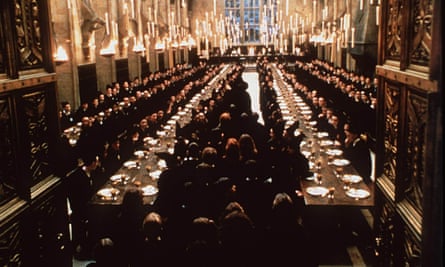
7. Hogwarts Castle from the Harry Potter series by JK Rowling
Well, there’s no way I’m leaving Hogwarts off the list this close to JK’s 50th! The School of Witchcraft and Wizardry is loved by boys and girls, adults and children alike. It’s the school where Harry Potter learns enough magic to duel with Voldemort and avenge his parents.
In appearance, Hogwarts resembles the huge, spooky castle that features in many gothic novels, and there’s certainly plenty of danger. The forbidden forest is crawling with giant spiders, armed centaurs and Hippogriffs. The hothouses are full of murderous plants like Mandrakes and Devil’s Snare – plus there’s a willow tree that tries to beat people to death. There’s a basilisk in the basement and a three-headed dog in the corridor on the third floor.
But apart from that, it’s a traditional, old-fashioned boarding school and many of the pupils regard it as home. In second book, Harry “missed Hogwarts so much it was like having a constant stomach ache.” And when Voldemort returns to Hogwarts in The Deathly Hallows, it is a home-coming for him too. “He walked on, around the edge of the lake, taking in the outlines of the beloved castle, his first kingdom, his birthright...”
Although when Voldemort attempts to claim that “birthright”, the entire school fights back!
8. Thornfield Hall from Jane Eyre by Charlotte Brontë
Thornfield is a typical gothic mansion, as remote and gloomy as its owner. But having already survived the abuse of Gateshead and the cruelty and privation of Lowood, Jane Eyre is undaunted. She takes up the position of governess to Mr Rochester’s young ward and is shown around the Hall, finding “all was well-arranged and handsome”, although she admits to some qualms about the third floor. Here, the rooms and corridors are dark and gloomy and filled with all the oldest furniture. The housekeeper, Mrs Fairfax, says “One would almost say that, if there were a ghost at Thornfield Hall, this would be its haunt.”
From the third floor, comes mad and mirthless laughter. There is an unexplained fire in the night. Later, Jane hears a scream and the sounds of a struggle and finds an injured man, oozing blood. After he has been secretly despatched in a chaise, Rochester is unable to face re-entering the house: “Come where there is some freshness, for a few moments,” he said, “that house is a mere dungeon; don’t you see it so?”
When Jane returns after a year’s absence, she finds that Thornfield has suffered the fate of so many mansions in gothic novels. It’s a blackened ruin.
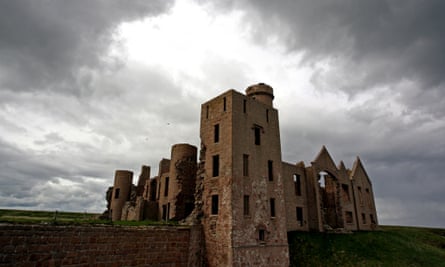
9. Castle Dracula from Dracula by Bram Stoker
Easily the spookiest place on this list is Castle Dracula. “A vast ruined castle, from whose tall black windows came no ray of light, and whose broken battlements showed a jagged line against the moonlit sky.”
Young solicitor, Jonathan Harker, is sent to the Transylvanian home of Count Dracula on business. He travels through wild, snowy country swarming with wolves, as the locals cross themselves and try to deter him. Upon reaching the castle, finds it worn and dilapidated, but still an impenetrable stronghold. Harker soon realises he has no way of escape.
The interior of the castle is decorated with costly furnishings, cups and plates of gold, and there is a good library. No servants however – and no mirrors. The castle is seething with menace and Harker becomes increasingly desperate to leave. Eventually, he climbs out of the window to discover a ruined chapel containing fifty great wooden boxes filled with earth. In one, lays Dracula. “I saw the dead eyes, and in them, dead though they were, such a look of hate, though unconscious of me or my presence that I fled from the place...”
10. Godsend Castle from I Capture the Castle by Dodie Smith
Perhaps my favourite of all, despite being the shabbiest on the list, Godsend Castle reflects the diminished fortunes of the Mortmain family and, looking around an empty room, Cassandra says “All we really have enough of is floor.”
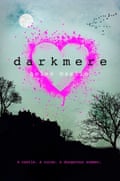
She loves Godsend so much, though, it’s impossible not be charmed by her descriptions. There’s the kitchen that glows rosily in the firelight, with a ceiling so high it’s lost in the gloom. There’s the freezing moat where Cassandra makes Neil join her for a moonlit swim, so that Rose can be alone with Simon. And there’s the bedroom tower, where Cassandra sunbathes naked among the battlements.
Dodie Smith wrote “I knew that family; I lived in that castle.” This book makes it possible for the rest of us to live there too.
Helen Maslin is the author of creepy thriller Darkmere, set in a spooky castle in Cornwall. Buy it at the Guardian bookshop.
